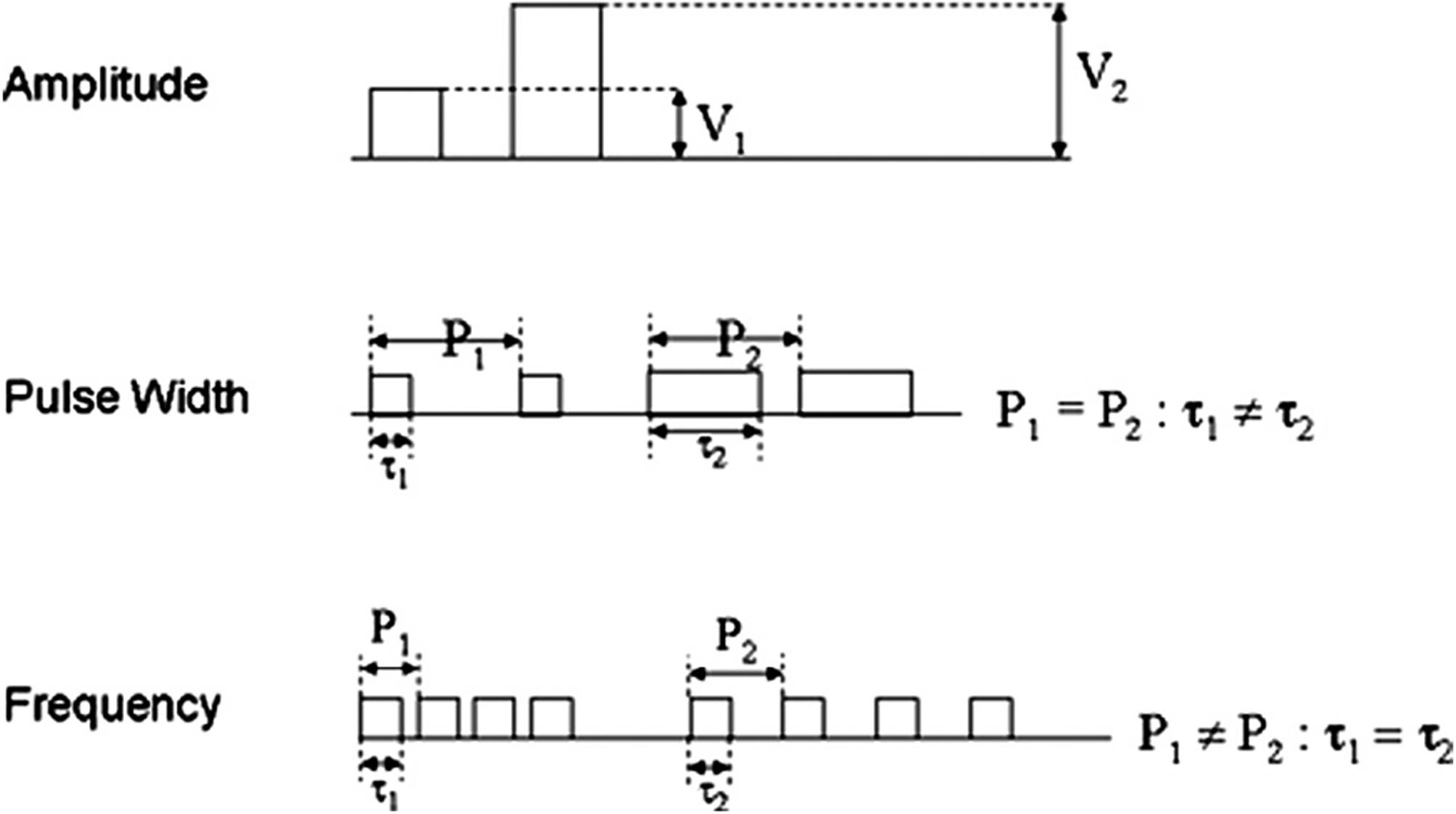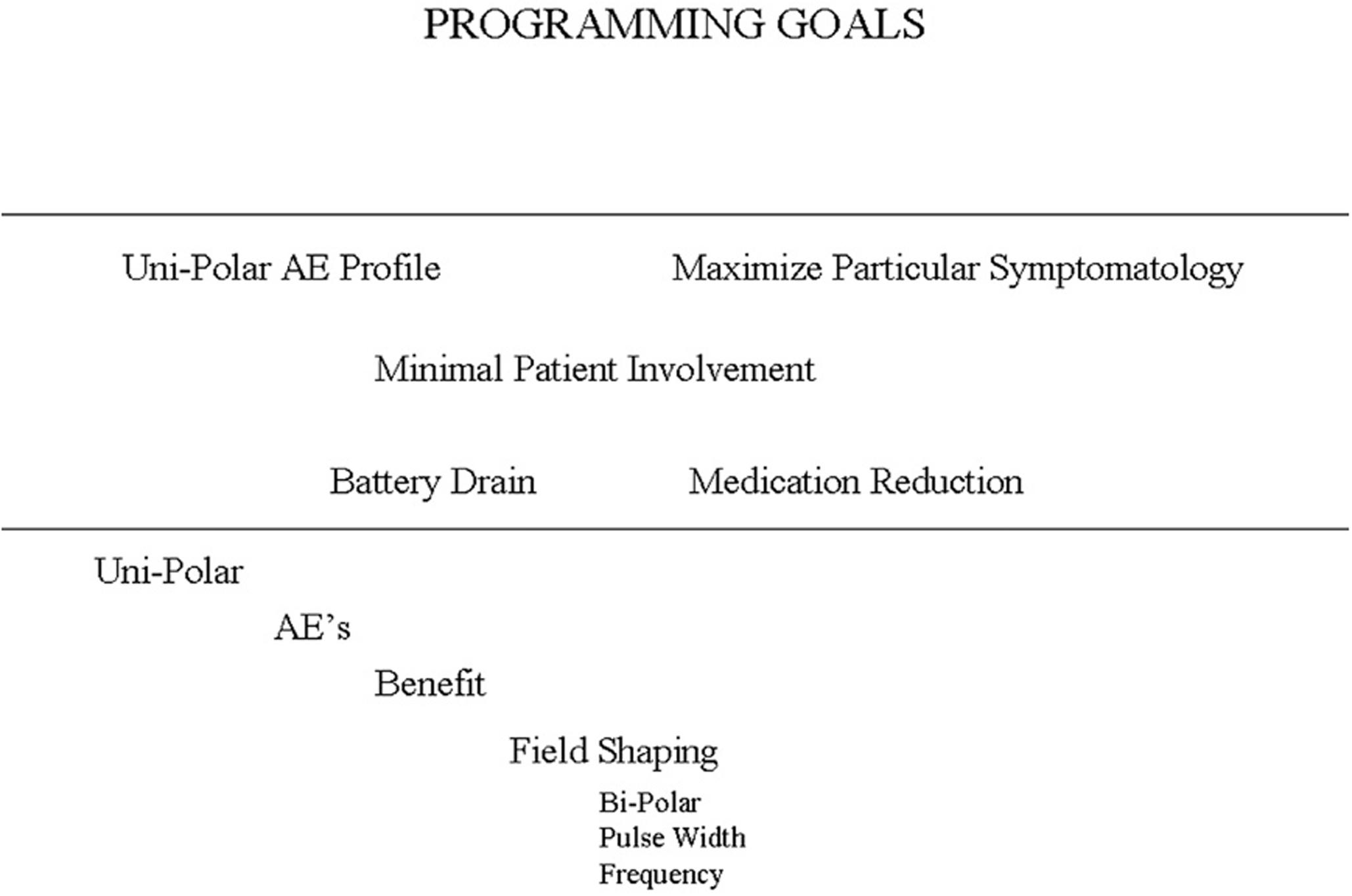Physical Address
304 North Cardinal St.
Dorchester Center, MA 02124
One of the greatest advantages of neuromodulation therapies, and in contrast to ablative procedures of the past, is that the anatomical and physiological substrate of the therapy may continue to be manipulated long after the implant surgery is accomplished. The adjustment of stimulation parameters postoperatively is called programming and allows the clinician to modify the effect of the implanted device. It is the goal of programming to optimize the delivery of the electrical therapy by changing specific parameters of the stimulation signal. Even though each area of neurostimulation therapy affects different clinically relevant modalities, and the specific neural elements that are targeted with stimulation may be different, the underlying approach behind programming is similar. When addressing the neuromodulation patient, the clinician needs to know the goals of the programming session (e.g., why surgery was performed and the expected reduction in symptoms), the potential side effects (both acceptable and unacceptable), the specific neural elements involved, and the time course for the benefits of the therapy to take effect. This chapter will describe a common methodology for programming and then use examples encountered in common neuromodulation programming situations.
Programming is the term given to the spatial and temporal adjustment of the stimulation signal parameters used to treat specific neurologic disorders. In all approved electrical delivery systems, there is a standard set of parameters that can be adjusted which includes
amplitude
pulsewidth
frequency
polarity ( Fig. 15.1 ).

The clinical relevance of each of these parameters is discussed in Chapters 6, 7, and 8 of this book. Most systems allow for the activation of at least one of a multiple of electrical transfer surfaces (interfaces) that make contact with tissue. These interfaces are known as the electrodes. The polarity of the electrodes includes either the cathode or the anode and both are needed for a complete circuit. The cathode is defined as the electrode which is negative in the initial phase of the stimulus waveform (see Chapters 6, 7, and 8 for a more detailed description of these parameters). The polarity of the electrodes is the most commonly modified parameter, other than amplitude. Pulsewidth and frequency tend to be adjusted later either to reduce adverse effects (AEs) or to focus the effect of neural stimulation on a specific neural element (e.g., cell body, axon, and axon size) [ ].
When first approaching a programming session, irrespective of the therapy modality, the clinician and the patient need to discuss the desired benefit and also the acceptable AEs. Even though this has been discussed prior to the surgical intervention, it is important to keep these two opposing stimulation effects in the forefront during the application of the therapy. Also, the mindset during initial programming is different than during follow-up programming or complication and change assessment; during initial programming, the process is evaluation while, during follow-up, the process is fine-tuning, while during troubleshooting it is evaluation and hardware troubleshooting, described in this chapter. In all, however, there are really only four parameters that are accessible by the programmer even in more recently developed leads using segmented contacts.
Fig. 15.2 shows a flow diagram representing the overall pathways for successful programming. Therapies but may differ on the internal details of each decision or action point, but the main points in the figure are similar for all therapies.

All neuromodulation systems rely a continuity of stimulation current from the stimulation generator (more commonly called the pulse generator [PG]) to the tissue, so it is critical that implanted hardware be functioning. The implanted hardware, as described in Chapters 6, 9, 10, and 11 , includes the PG, the electrode, or tissue–stimulation interface, and the connections between the two. Some devices also include external devices that can recharge the implanted battery. All systems come with an external device that allows the patient to adjust certain parameters that are defined by the programmer. At all visits, including the initial visit, testing of this hardware should be the first agenda item during a patient programming visit. The time required for this is minimal yet, as described in the troubleshooting this chapter, it is both helpful in determining basic issues such as the lack of proper charging, or creating a record of the patient specific normative electrical parameters of impedance and current which can be helpful at future visits. Hardware evaluation consists of three components:
system continuity
battery state and longevity
utilization history.
Continuity assessment involves passing a known quantity of current, or generating a known voltage difference across the active and reference leads, from the PG and then recording the variation in potential or current across the system. The method of testing is somewhat different for each manufacturer and thus the normative values are different. Also, since the implanted devices are in different tissues for different therapies and thus may overlie areas of differing biological material (e.g., CSF, gray matter, white matter, dura, blood), the exact values of the impedance can be highly variable. Thus, it is not the exact values that are important but their consistency, after an initial period of adjustment. Immediately after implantation, and for a few weeks postoperatively, tissue impedance changes due to damage from the implant and the healing process. Devices that are passed through tissue, such as deep brain stimulation (DBS) leads, cause more damage than devices that are placed directly on the surface of the tissue, such as for peripheral nerve stimulation, or on neural coverings, such as spinal cord stimulation devices. Even with these less invasive devices, there are impedance changes due to scarring and normal biologic foreign body reactions [ ]. By recording these values at each visit, the data can be used to evaluate potential continuity breaks, short circuits, or even device movements, which although unlikely, are possible [ ]. The details of localizing the points of these failures are described in this chapter.
Become a Clinical Tree membership for Full access and enjoy Unlimited articles
If you are a member. Log in here